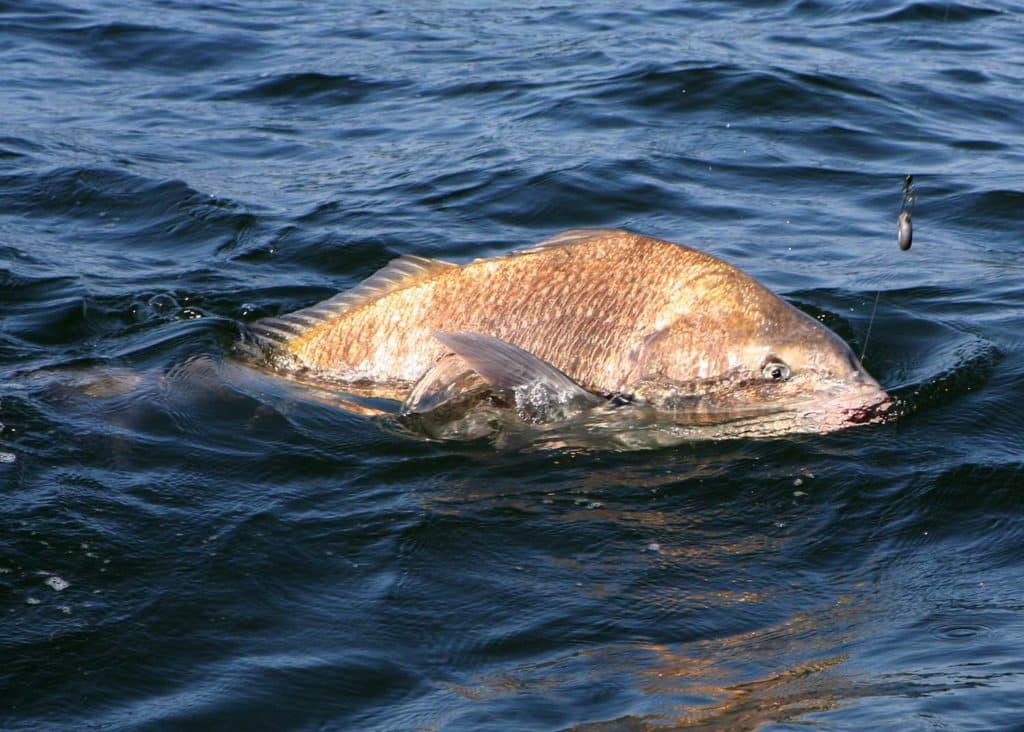
People living along the shores of the Chesapeake Bay love their shellfish — heck, half of them think they invented blue crabs — but the bounty of the Bay isn’t enjoyed only by humans. Not by a longshot.
A creature better known in southern climes comes to visit as spring waters warm, ready to gorge on the Bay’s crabs as well as its clams and mussels: the black drum. What’s surprising, however, is that most of these drum are utter goliaths of the species.
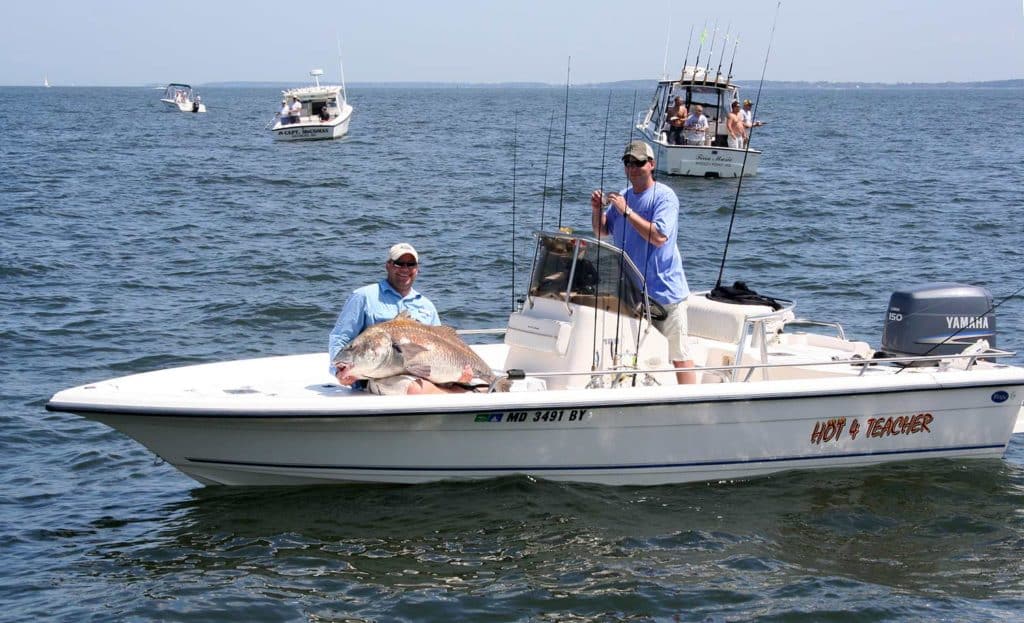
In the Chesapeake Bay, it’s rather uncommon to catch a black drum under 20 pounds; 40- and 50-pound fish are average, and fish pushing the 100-pound mark get caught every season. In fact, Cape Charles, VA, at the mouth of the Chesapeake, can lay claim to six IGFA line-class records for black drum. The largest of them, at 111 pounds, is a mere two pounds off the all-tackle world record of 113 pounds plus one ounce, which was set just up the coast in Lewes, DE.
Early birds show up along the shoals at the mouth of the Bay in April, when they’re also caught along the DelMarVa barrier-island surf. Within a week or two anglers dropping baits at well-known wreck and reef sites inside the Bay, like the Cell and the Cabbage Patch, will be engaged in sweat-inducing tug-of-wars. And by mid-May the run is usually in full swing with monster black drum being caught from the capes clear up into Maryland waters.
Black Drum Baits
Historically, anglers targeting the mega-blacks have used very different baits and methods from area to area. In fact, there’s little crossover even when considering hotspots just 40 or 50 miles apart.
In the surf, casting simple top-and-bottom rigs baited with sand fleas is a given. But when targeting black drum on the shoals at the mouth of the Bay, baiting up with freshly shucked clams is the norm. Most anglers anchor up along a drop-off and fan-cast four to six baits on egg-sinker or fishfinder rigs, then settle in and wait for a bite.
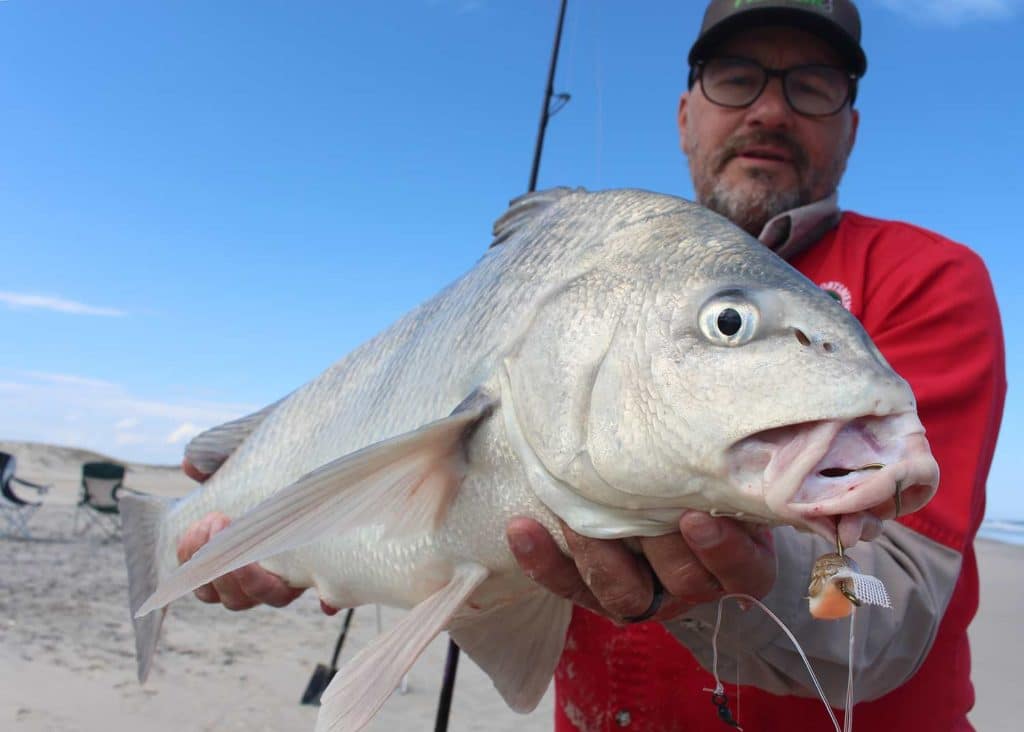
Anglers seeking the big blacks up inside the Bay, on the other hand, usually use soft crab chunks rather than clam baits, and this becomes more and more common the farther north you travel.
Anchoring, meanwhile, is virtually unheard-of up the Bay in Maryland’s waters. Instead, anglers here set up their rods with fishfinder rigs, bait 10/0 to 12/0 hooks with half of a soft crab, then begin milling around likely areas at slow speeds. The crew remains on a hair trigger until fish are spotted on the fishfinder — there’s no mistaking the absurdly large marks they make on an LCD screen — and then the captain shifts into neutral as the anglers drop down their offerings asap.
Finding Black Drum
In recent years this game has changed a bit, particularly in the Maryland sections of the Chesapeake. Hotspots that have held reliable drum hunting for as long as anyone can remember, like Jane’s Island and the famed Stone Rock, no longer seem to hold the big blacks like a magnet from mid-May through mid-June.
While that has made it tougher to find fish, it also opened up some new opportunities. Some pioneering anglers have discovered that the black drum are quite happy to inhale scented jigs, Gulp! baits in particular, giving light-tackle sharpies who eschew using bait a very real shot at hooking into these monsters.
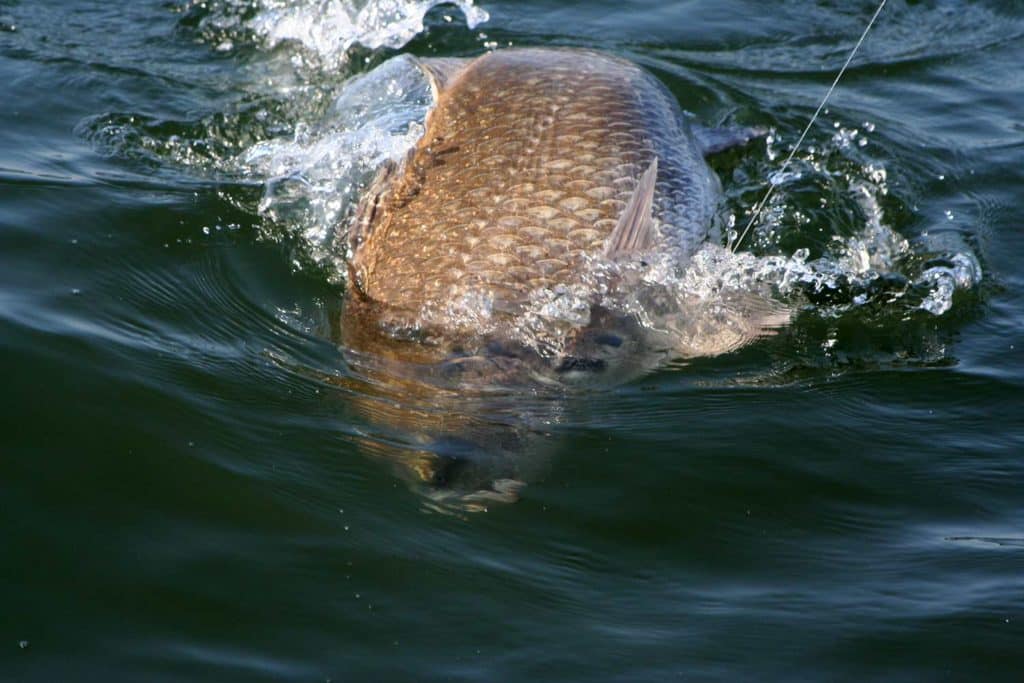
Others, meanwhile, have noticed that the drum can be found at several of the Chesapeake’s oyster-restoration reefs, where reef balls have been placed. These reef balls are set in spat and quickly covered in growth including oysters and mussels, so considering the drum’s fondness for crunchy foods, their presence around the reef balls is little wonder.
Later in the season, once summer officially hits, the schools of roving black drum break up into small pods or loners. This makes it a lot tougher to target them, and at that point most become an incidental catch.
They sometimes pop up for anglers casting to specks and reds in the southern areas of the Bay. On occasion, they unexpectedly grab a bait intended for stripers as far north as Baltimore, and they might turn up on the end of a fishing line anywhere in between.
The artificial islands of the Chesapeake Bay Bridge Tunnel are something of an exception, as they’re known to hold drum right through the season until fall and might provide a tug of epic proportions at just about any time.
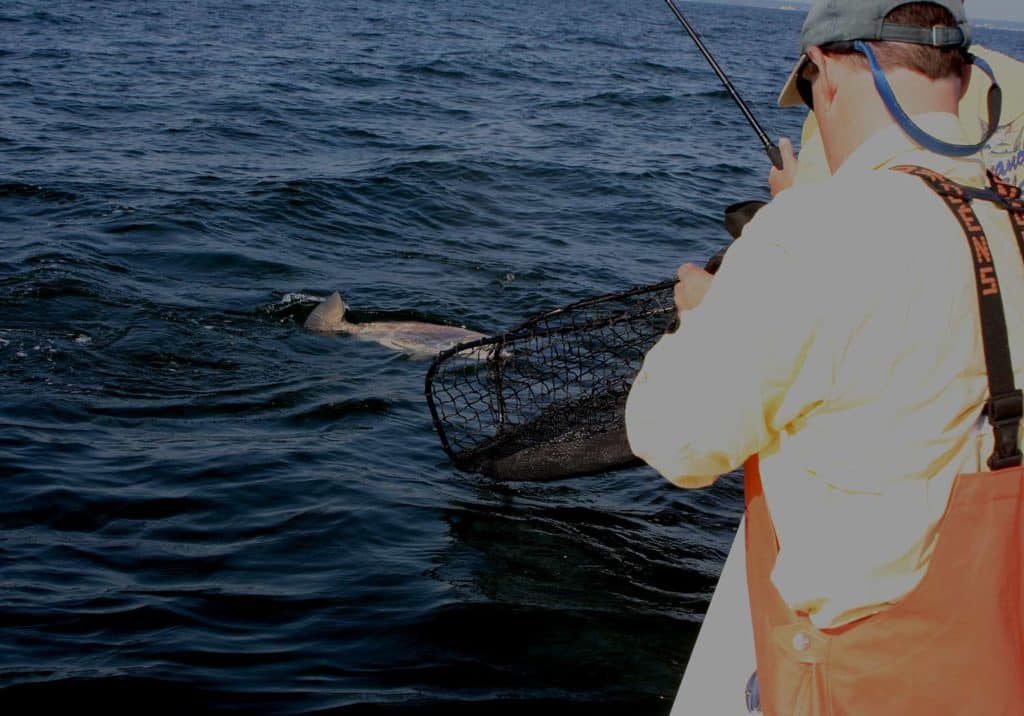
Careful Handling
Black drum grow slowly and can live for more than 50 years. The larger, older fish don’t taste good, and they’re armored with scales so thick that it takes a table saw to get through them. Many drum over 30 pounds also develop worms in their muscles.
Anglers generally agree that fish over 20 pounds, and certainly those weighing 30 pounds and above, should be released unharmed. Plan to use circle hooks and carry a landing net with fish-friendly mesh.
Black drum are true mammoths of the mid-Atlantic, both in size and appearance. Most anglers would agree that these fish are no more beautiful than an elephant wearing a rug. But if you want to catch a black drum breaking the triple-digit mark, there’s no time nor place better than Chesapeake country in May.








